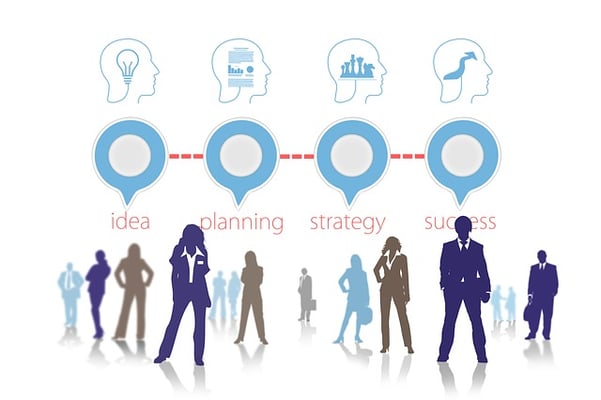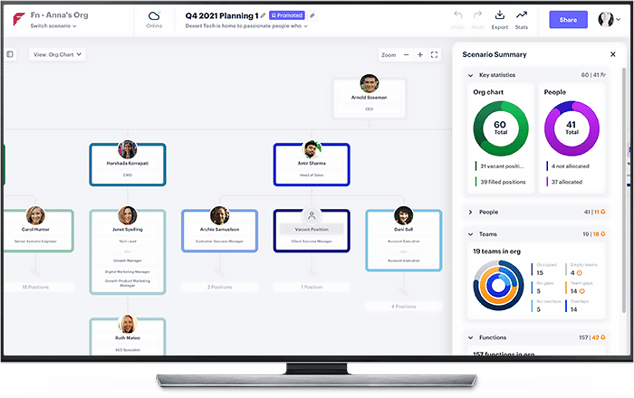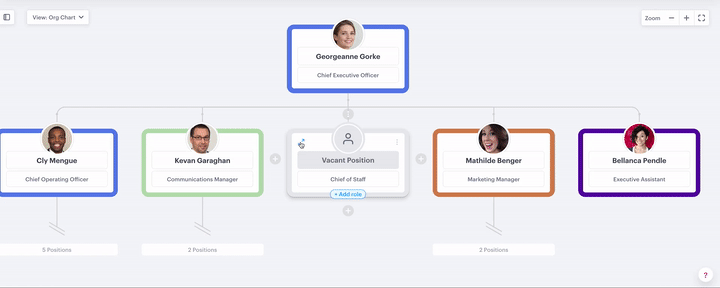It is more challenging than ever to create and implement workforce strategies. Businesses now operate in a global economy, and change comes rapidly.
Because of this, workforce planning has become a top priority for business leaders. They, along with HR professionals, must create strategies that ensure that workforce needs are met in a way that aligns with the goals of the organization.
At the same time, these actions must be balanced with the current operational needs of the organization. This is where conflict can occur. Leaders must find ways to staff the organization in a way that meets current operational needs while also establishing staffing strategies to ensure that plans for future growth can be achieved.
None of this even begins to address the shifting needs and expectations of workers. Dealing with all of these issues takes a holistic approach that emphasizes communication and the ability to coordinate and prioritize a range of needs coming from various sources. This is where workforce planning meets strategy alignment.
Workforce planning and strategy alignment
Workforce planning is a very broad concept. It simply means following a chosen methodology to understand and meet the current or future workforce needs of a business.
This type of planning involves assessing the current state of the workforce, articulating the needs of the organization, identifying gaps that exist, and creating a strategy to close those gaps.
Strategy alignment recognizes that any workforce planning efforts aren’t going to be very effective if they don’t align with the goals and objectives of the organization. That requires a coordinated effort to understand and meet current operational needs while also working with leaders to ensure that future needs are met based on business growth strategy.

What is workforce alignment?
Workforce planning, especially as it involves strategic alignment, isn’t only about hiring enough people with the right skills. It’s also about working with the existing and future workforce to ensure that every employee understands how their role aligns with the company’s future plans.
Workforce alignment also includes ensuring that development opportunities are available to help workers gain the competencies they will need to continue to contribute to the organization after the company’s needs change.
Here are some of the actions company leaders might take to improve workforce alignment:
Share objectives
Workforce alignment can be effective only if team members are aware of current and future company goals and strategies. Leaders must create communication strategies that adequately share this information and help workers understand how their roles and responsibilities will change to meet organizational needs.

Change how feedback is given
Workforce alignment and the traditional annual performance review simply don’t work together. Employees need to be given regular, meaningful feedback in intervals that work with the organization or team.
Align contractors and freelancers
In order to meet their staffing needs, many companies have expanded their workforce beyond employees. It may now include contractors, consultants, freelancers, and gig workers. It’s important that the people in those roles are also included in the workforce alignment process.
Prioritize connection and motivation
It is nearly impossible to create an aligned workforce when employees are disengaged and unmotivated. When workers don’t feel a sense of ownership, or when they don’t feel valued, it’s difficult to motivate them to adjust to changing roles as the organizational needs change.
Give people a reason to want to understand company strategy and make changes so they can continue to contribute.
Create an accountability culture
Once you have clearly communicated your company’s objectives, it’s important to establish an expectation of accountability. Every person at every level of the organization is ultimately responsible for making a positive contribution and executing their duties in alignment with company goals.
 Functionly includes scenario analytics.
Functionly includes scenario analytics.
Track progress with analytics
Workforce analytics takes existing organizational goals and tracks them during the alignment process. A goal can be fully aligned, in the process of being aligned, or not aligned at all.
For example, if there are currently no existing human resources to meet a particular goal and there are no plans in place to align the workforce plan with that goal, then it has not been aligned at all. Analytics could be used to track the process of bringing that goal fully into alignment.
Use technology effectively
Workforce alignment requires a full understanding of the organizational structure. It’s impossible to assess whether the workforce is capable of achieving organizational goals without mapping out roles and responsibilities.
This process includes documenting the organizational structure to increase current understanding as well as modeling changes based on future goals.
5 Pillars of workforce planning
The workforce planning framework consists of five pillars. These are:
1. Defining critical issues in the workforce
What is a critical issue in the workforce? It is any problem, need, or inability to respond to challenges or opportunities. This could encompass a wide range of situations, from not having enough skilled staff to meet current production goals to a particular team lacking the necessary skill set to help accomplish the future goals of the company.
The purpose of workforce planning is to create and execute a plan to ensure that the organization’s workforce adapts and changes as internal and external growth requires. This can be accomplished only with a process that begins with defining these critical issues.
2. Identifying where gaps and surpluses exist in the workforce
In workforce planning, a gap is a shortcoming. It indicates an unmet need that exists now or that is predicted to exist in the future.
For example, a workforce analysis might ask, do we have adequate staff available to complete our current business processes? What if a team member left their position to take another role? Will we have what we need if we launch a new product line?
 Gaps and surpluses can be monitored in Functionly by utilising the fine grain responsibility and accountability assignment.
Gaps and surpluses can be monitored in Functionly by utilising the fine grain responsibility and accountability assignment.
- If the answer to these questions is no or even unsure, that indicates a gap. Additionally, a gap is indicated when there are enough workers but those workers don’t have the required skills.
A workforce surplus indicates that there are currently adequate staffing and competencies to reach organizational needs — and then some. It is usually preferable to have more human resource assets than you need, but beware; a surplus can also indicate wasted talent or risk of attrition.
While it is fairly easy to identify gaps and surpluses in a current state, it can be more challenging to forecast these when you are planning for growth or simply ensuring that the workforce is capable of meeting future challenges.
3. Articulating a business case
This step essentially uses the information that was made clear through steps one and two to articulate a clear business case. The purpose of a business case is to justify any time and resources spent on creating and implementing a strategy to close workforce gaps and take better advantage of surpluses.
While the business case is not specifically a financial document, it will often be used as supporting evidence to acquire funds needed to complete workforce planning goals. It should be an evidence-based document that also tells a compelling story.
Here are some elements that should be included in a business case for workforce planning:
- Why the change to the workforce needs to be made
- How executing the plan will meet a business need or solve a problem
- The details of the proposed solution
- How the proposed solution and problem align
- The evidence-backed consequences of not acting
- How long it will take to execute the solutions
- What human and financial resources are needed to implement the solution
A business case is important for convincing stakeholders that there is a pressing need, that it’s worth pursuing a solution, and that the proposed solution will work. It also details how failing to pursue a solution would have negative consequences and why investing in a solution is worthwhile.
But there are other benefits as well.
When a workforce planning team is required to go through the process of creating a business case, they must collaborate and come to a consensus on what the problem is and how to solve it. Additionally, with a business case in hand, business leaders are better able to set priorities and allocate funds and resources in a way that focuses on the needs of the organization.
4. Creating a strategic plan
In this stage, business leaders come up with a plan to meet the workforce needs that have been identified. There are three actions that will be executed as part of this pillar. These are:
- Defining the workforce drivers
- Considering alternative strategies
- Creating and implementing policies that change the current workforce
What are workforce drivers?
A workforce driver is something the company intends to accomplish. Examples of workforce drivers include:
- Reducing risk
- Increasing productivity
- Saving money
- Encouraging innovation
- Establishing accountability
- Increasing agility and preparedness
It’s important to clearly articulate these drivers because they provide a quantifiable goal.
Alternative strategies
The approach to closing gaps should be strategic. A solution that is solely reactive is not going to be as effective as one that takes into consideration the organization’s goals and long-term plans.
So it’s important to explore strategies that aren’t just about filling positions in the short-term or providing training to meet an immediate need. Leaders should always keep the big picture in mind when making plans to move ahead as a business.
Creating and implementing policies that change the workforce
It’s important to take a holistic approach to strategic workforce planning. It isn’t enough to implement changes and policies that simply solve a particular problem or reach a particular goal.
Organizations that successfully meet their workforce needs and are able to achieve their objectives have an engaged staff. This is accomplished through policies that foster empowerment, opportunity, accountability, and autonomy.
5. Developing an operational plan
This pillar focuses on the functions of the human resources department. It involves developing new processes to be implemented and executed by HR as well as modifying existing processes that may not be meeting organizational goals.
In many companies, this means shifting the function of the human resources team away from administrative or compliance-related tasks so they can focus on work that directly improves operations.
This work includes redefining roles, creating new roles, establishing better hiring processes, implementing employee development plans, and even challenging the management approaches of team leaders.
Strategic vs. operational workforce planning
There are several key differences between operational and strategic workforce planning.
The first is the timeline. Strategic workforce planning is implemented to create a workforce strategy that ensures the business can function and meet long-range objectives. Strategic workforce planning aligns with organizational planning, which is often laid out in one, five, and ten-year increments.
Meanwhile, operational workforce planning is executed over a shorter period of time. Organizations may start evaluating the effectiveness of operational workforce planning in as little as a month.
Additionally, the scope of operational planning is different. Here the focus is on changes and strategies that include redefining roles, modifying training requirements, ensuring that the company culture aligns with the organization's goals, and setting expectations for front-line management.
Finally, operational workforce planning largely considers internal factors while strategic planning considers many external factors such as workforce trends.
Workforce alignment is a valuable process for any company to navigate. It is a structured way for an organization to accurately assess its current workforce based on current and future needs.
The company can then create and execute both strategic and operational plans that solve problems and ensure the organization can thrive and grow with an engaged and competent workforce.
Many organizations make Functionly a part of their workforce planning process - give it a go today for free.




